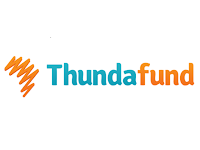🐞 Nature Fading: Are We Letting the Insect Apocalypse Take Hold?
Introduction — A Crisis Unseen, Yet Everywhere
They’re small. Often ignored. Yet their disappearance could unravel the complex web of life. Despite protected status, recent studies paint a grim reality:
-
Germany: flying insect biomass down 75–82% over 27 years
U.S.: beetle numbers dropped 83% over 45 years; butterfly populations falling sharply across states
-
Puerto Rico: total arthropod biomass collapsed up to 60-fold since the 1970s
These are not isolated snapshots—they signal global insect decline, even in “safe” zones. This isn’t just about bugs; it threatens food security, ecological resilience, and ultimately, human survival.
In this article, we explore:
-
What the data really show.
-
Root causes behind the declines.
-
The cascading impacts across ecosystems.
-
Why protected areas aren't enough.
-
Are we merely observing—or will we act?
1. Revealing the Numbers in “Safe” Spaces
🌿 Germany’s Malaise Trap Data
A 27‑year study across 63 protected reserves found flying insect biomass had plummeted between 75–82%. These areas were undisturbed by urban growth or farming—yet the insect numbers fell dramatically, independent of weather or local land use changes.
🦋 United States Monitoring
Beetle populations dropped by 83% over 45 years in remote U.S. wildlands. Entomologists report silent nights and empty wilderness . More broadly, butterfly counts declined 22% nationally from 2000–2020; more than 100 species saw drops greater than 50% .
🌴 Puerto Rico’s Alarming Collapse
Arthropod biomass in Puerto Rico's rainforest is down up to 60-fold. The ripple effect devastated insectivorous creatures—lizards, frogs, and birds.
🌍 Global Patterns Confirmed
A broader review confirms a 41% drop in insect species over the last decade, with ~40% of global insect species threatened.
2. What’s Driving This Insect Apocalypse?
Multiple stressors are converging:
1. Climate Change
Rising temperatures and drought stress likened to tropical scorch have devastated insect habitat in reserves.
2. Pesticides & Agricultural Intensification
Heavy agrochemical use and monocultures eliminate habitat and poison non-target insects.
3. Light & Chemical Pollution
Artificial light disrupts nocturnal insect behaviors; pollutants destabilize life cycles.
4. Habitat Fragmentation & Urban Sprawl
Even “protected” zones suffer from isolation and corridor loss.
5. Invasive Species & Pathogens
New parasites and competitors push fragile insect species over the edge.
3. Ripple Effects: When Bugs Disappear
Insects aren’t just creepy crawlers—they're the workhorses of ecosystems:
-
Pollination: Essential for those 75% of crops relying on insects.
-
Food Web Support: Birds, amphibians, bats, lizards, and fish all rely on insect prey .
-
Decomposition & Nutrient Cycling: Soil health hinges on insect activity .
Documented declines in birds (billions lost) and amphibians trace back to this foundational collapse.
4. Why Protected Areas Aren’t Enough
-
76% of global insect species aren’t adequately represented in reserves.
-
Even species within reserves are failing—protected land alone doesn’t buffer climate or chemical pollution .
Insects are silent victims of global pressures—protected boundaries don’t shield them from warming, light, or air pollution.
5. Are We Just Watching—or Taking Action?
Question 1: Are We Waiting Too Long?
The decline has accelerated to 2–5% per year, meaning near-total collapse in a few decades . We risk reaching irreversible tipping points before public awareness or policy catches up.
Question 2: Do We Truly Understand the Stakes?
Insect declines don’t make flashy headlines, but their absence will transform agriculture, ecosystems, and economies. Are we ready to grasp the severity before it’s too late?
Question 3: Will We Act—Systems, Policies, Values?
Current efforts include:
-
Germany’s insect protection program since 2018.
-
Integrated Pest Management advocacy .
-
Urban “rewilding” measures—planting native meadow habitats .
Still, with millions of species unmonitored, do we need deeper commitment—legislation, funding, cultural change?
6. Paths Forward: How to Save the Six-Legged Majority
1. Policy & Governance
-
Expand insect inclusion in protected-area planning.
-
Regulate pesticides, light pollution, and agrochemicals.
-
Incentivize climate-smart, nature-friendly farming.
2. Habitat Restoration & Rewilding
-
Connect reserves with corridors.
-
Plant native, pollinator-friendly flora in cities.
-
Support large-scale habitat regeneration.
3. Scientific Monitoring & Citizen Science
-
Plug data gaps via community-led surveys.
-
Invest in long-term monitoring systems.
4. Education & Culture Shift
-
Spotlight insect stories in schools and media.
-
Reframe insects as allies, not pests.
5. Individual Action
-
Plant pollinator gardens.
-
Reduce or eliminate pesticide use.
-
Support local, organic agriculture.
7. A Call to Wake Up Before It’s Too Late
We are at a defining moment. Will we:
-
Continue reading headlines while ecosystems collapse?
-
Or rise to action—advocating policy, shifting economies, planting wild meadows?
Insects built terrestrial life. Their disappearance means global systems unravel—and soon.
8. Conclusion: From Witness to Warrior
This isn't another environmental story—it’s a wake-up call from nature’s quietest, but mightiest architects. Protected reserves are faltering. The insect apocalypse is real—and urgent.
👉 Your choice matters—Read. Question. Act.
How will you respond? Let’s not be spectators. Let’s be stewards.
📚 References & Sources
-
HR Janzen & W Hallwachs, Guardian insect decline data, theguardian.com
-
Germany’s 75–82% decline in protected areas, freepress.org
-
US beetle & butterfly data , theguardian.com+2
-
Puerto Rico collapse , mongabay.com
-
Global insect decline, 41% drop smithsonianmag.com
-
Causes: pesticides, climate & habitat vox.com
-
Protected area inadequacy
-
Germany conservation program, wikipedia.org
-
Urban habitat interventions
-
Conceptual commentary



.png)


.png)
%20(1).png)
.png)
Comments
Post a Comment